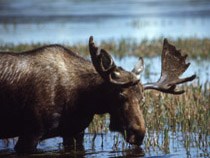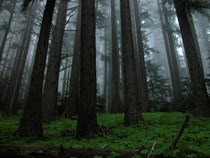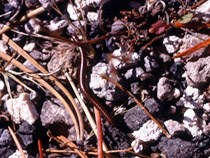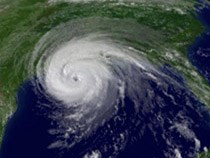Biodiversity provides us with drinking water, oxygen to breathe, food, medicine, decomposition of waste, and helps our planet withstand natural disasters.

NPS Photo.
Food
- Much of our food exists because of the ecological services of pollinators.
- Fish provide billions of people with essential animal protein.
- A variety of different animal types are used in agriculture and food production.
- Thousands of species of plants have been cultivated for consumption throughout human history
- Meat from native wildlife contributes to food and livelihoods in many countries.

NPS Photo.
Medicine
- Many medicines are derived or modelled upon compounds provided by the natural world.
- Aspirin was originally made from willow tree bark.
- The rosy periwinkle, a flower that grows in Madagascar, provided a treatment for Hodgkin’s disease, while a chemical from the saliva of leeches dissolves blood clots during surgery.
- Penicillin and tetracycline, as well as other antibiotics, are derived from microorganisms.

NPS Photo.
Drinking Water
- Biodiversity sustains the water cycle (water moving over or under the ground, evaporating and transpiring into the atmosphere, then falling back to Earth as rain or snow) and is sustained by biodiversity.
- Transpiration (the movement of water through vegetation and soil) provides 62 percent of annual renewable fresh water on our planet.
- Groundwater (water that seeps underground) is the major source of drinking water for many people.
- Biodiversity cleanses and purify water. Wetland plants, for instance, help remove heavy metals and excessive levels of nutrients.
- Vegetation can affect local rainfall patterns. Large-scale removal of plants changes these patterns.

NPS Photo.
Oxygen
- Through photosynthesis, plants use carbon dioxide, sunlight and water to create energy and release oxygen. In turn plants and animals breathe in oxygen and exhale carbon dioxide.
- One of the biggest sources of oxygen is phytoplankton living near the ocean’s surface.
- Trees and other plants absorb ground level ozone, carbon monoxide, sulfur dioxide, and other greenhouse gases

Rosalie LaRue, NPS Photo.
Decomposition
Decomposition is the natural process of dead animal or plant material rotting and being broken down.- Bacteria, fungi, worms, flying insects, beetles, and other living creatures are decomposers.
- Decomposers recycle carbon, nitrogen, and phosphorous - providing essential nutrients for new plants to grow. Without their work, it is possible that the Earth would be unable to support life.

NOAA Photo.
Healing and Recovery from Natural Disasters
- A wide variety of species in an ecosystem provides an ecosystem with greater resistance to disease and pest outbreaks.
- Plants help protect soil from erosion.
- Bacteria, insects, plants and other living creatures release nutrients and help keep soils fertile.
- An ecosystem with rich biodiversity is more resilient and able to withstand the extinction of an individual species.
Last updated: March 15, 2016
